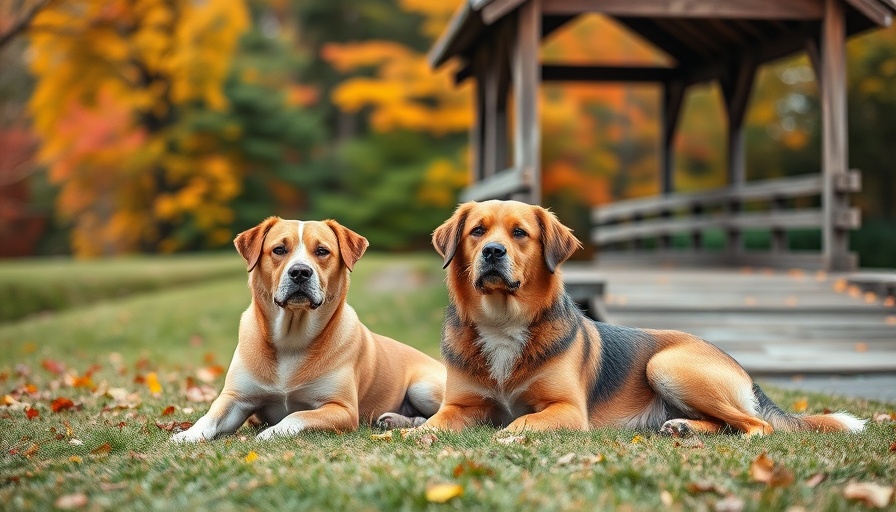
Discovering Pet-Friendly Adventures in Historic New England
New England is renowned for its stunning landscapes and rich cultural heritage, making it an ideal getaway not just for humans, but also for our four-legged friends. Whether you're wandering through charming towns or exploring breathtaking nature, there are plenty of activities for pet lovers. Let's dive into the best pet-friendly things to do in this beautiful region.
Charming Covered Bridges: Perfect for Paws and Pictures
As you traverse the picturesque landscape of New England, keep an eye out for its iconic covered bridges. These architectural wonders don't just provide shelter from the elements; they also offer fantastic photo opportunities with your furry companions. Each bridge holds a unique story, and many are accessible for pets, making them a great stopover for an outdoor excursion. Think of it this way: your pooch might feel like they're in a fairy tale as they scamper across these historic landmarks!
Fun at Gillette Castle State Park in Connecticut
Nestled in New Haddam, Connecticut, Gillette Castle State Park is a must-visit destination where historical charm meets natural beauty. Once the home of actor William Gillette, this incredible state park welcomes leashed pets on its scenic trails. Enjoy picnics surrounded by nature or take a leisurely hike while soaking in the vistas of the Connecticut River. Although your pet can't enter the castle itself, there are vast outdoor areas where dogs can explore and enjoy the surroundings. This day out is perfect for both you and your pet, providing both exercise and a touch of history!
Enjoying Cape Cod: Heavenly Beaches for Canine Companions
Cape Cod is synonymous with summer fun and relaxation, boasting some of the best dog-friendly beaches in New England. While the bustling summer season is delightful, visiting in the off-season allows you to experience this stunning area without the crowds. With sprawling beaches like Town Neck Beach and Cahoon Hollow Beach, your pet can run freely and play in the sand. Moreover, local pet-friendly dining spots allow you to enjoy fresh seafood while your furry friend relaxes by your side. The stunning dunes and coastline are perfect for creating lasting memories!
The Importance of Pet-Friendly Destinations in Promoting a Healthy Lifestyle
As pet professionals—from veterinarians to pet accessory developers—understanding the benefits of pet-friendly destinations is crucial. Enabling pet owners to travel with their companions encourages physical activity, strengthens the bond between pets and their owners, and increases overall well-being. With the right resources and knowledge, you can inspire your clients to explore destinations like New England that celebrate pets' roles in their lives.
Future Trends in Pet Travel: Embracing Wellness and Inclusivity
The travel industry has seen a pivot towards inclusivity, and this shift extends to our pets. The growth of pet-friendly accommodations, restaurants, and attractions illustrates a broader trend towards recognizing the importance of pets in family dynamics. For professionals in the pet care industry, advocating for more pet-friendly spaces not only enhances pet wellness but also creates opportunities to market products that cater to travel-loving pet parents.
How to Prepare for Your Pet-Friendly Adventure
Planning a pet-friendly trip requires some forethought. Ensure you have the right supplies, including a comfortable harness, plenty of water, and some favorite toys to keep your pets entertained. Research destinations ahead of time to guarantee they offer adequate amenities for you and your furry friend. Not only does this preparation lead to a smoother trip, but it also enhances the experience for everyone involved.
Conclusion: Embracing the Joys of Traveling with Your Pet
Exploring New England with your pet offers more than just fun and adventure; it's about creating cherished memories that last a lifetime. As a pet care professional or enthusiast, encourage the importance of discovering new places with our best friends by our side. Together, we can promote a culture that values pet-inclusive experiences and nurtures the special bond we share with our pets. So pack your bags and leash up; a new adventure awaits!
 Add Row
Add Row  Add
Add 




Write A Comment